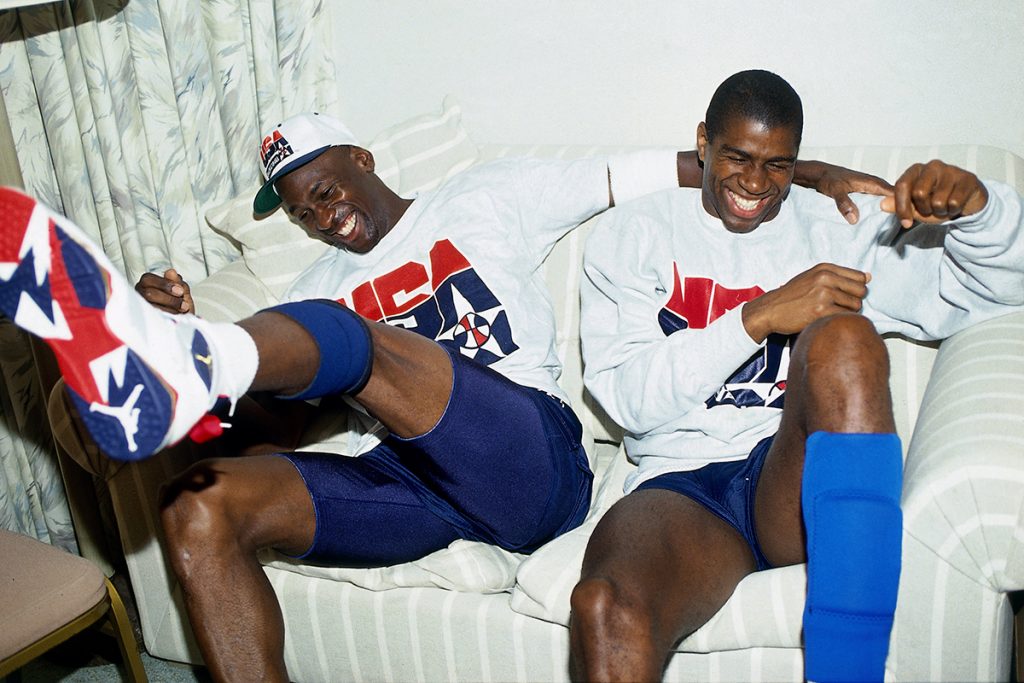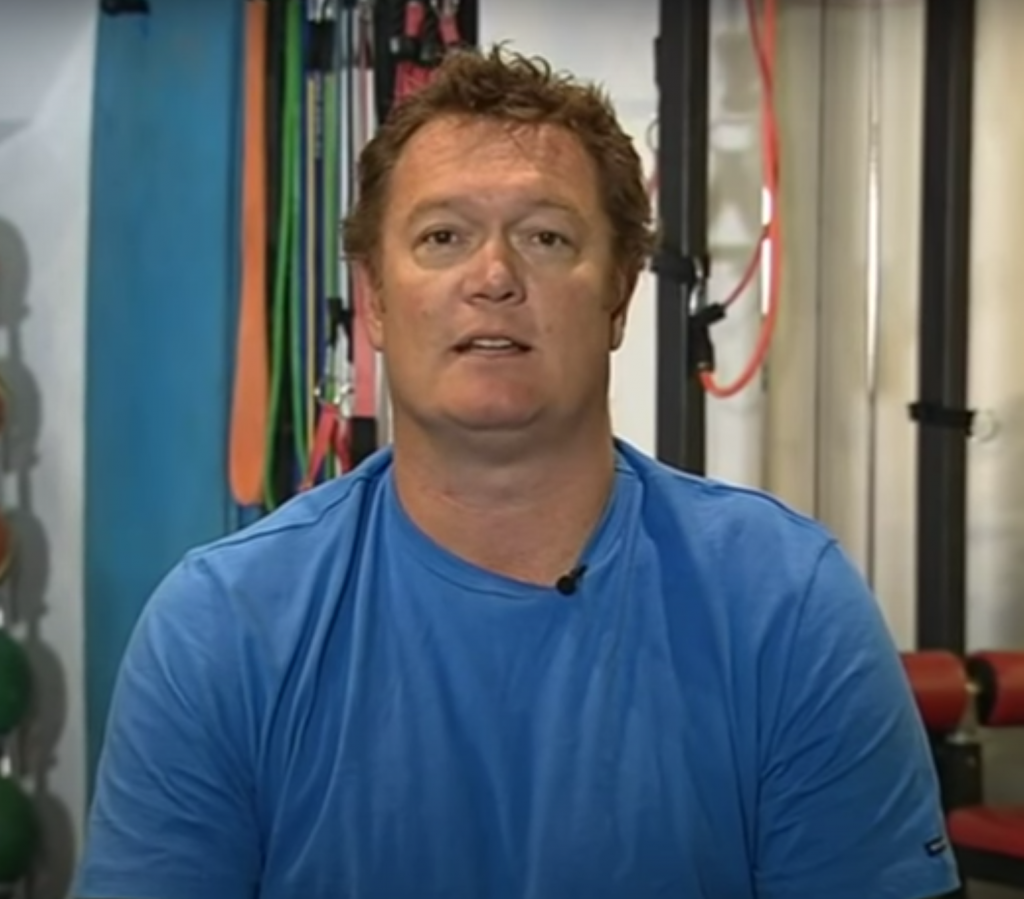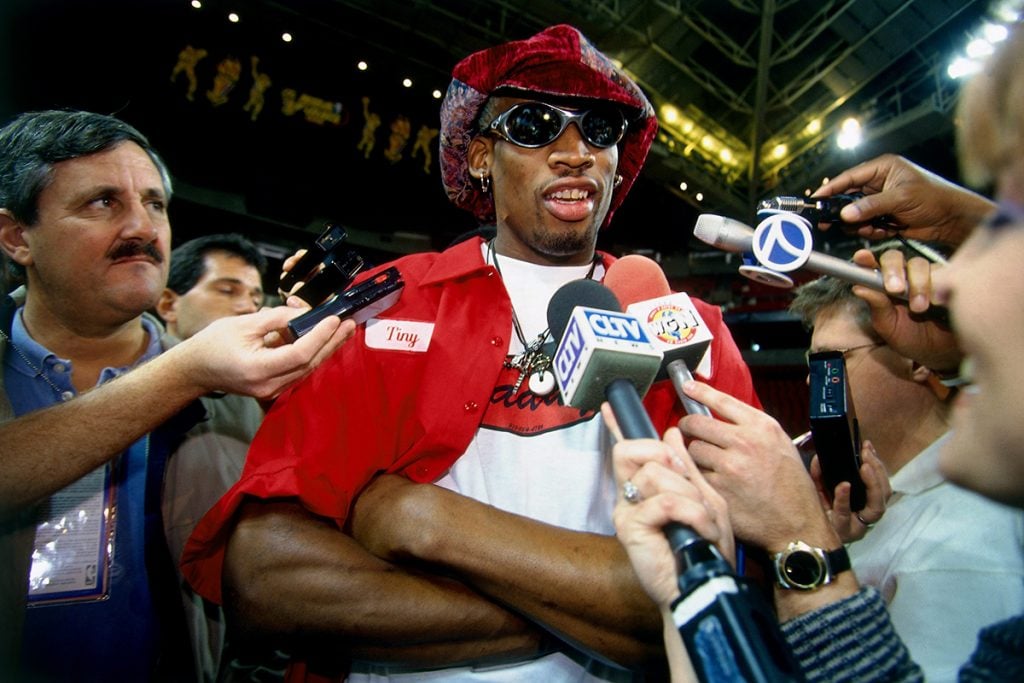Andy Hayt/NBAE, courtesy of Netflix
With Netflix's 'The Last Dance' coming to an end, Lars Brandle peels away some of the layers on what you need to know, what to watch for, and what they missed.
These have been desperate times for sports fans. There’s literally nothing on, and if there was, we wouldn’t be allowed in to watch. It’s like the never-ending off-season.
This was meant to be an Olympics year. Nope. It’s all good fine if you’re a fan of German football and Korean baseball, but those ultra-competitive tri-acronym sports we throw money at are locked in suspended animation. NBA, AFL, EPL. Your only bet is KFC.
2020 is officially the worst year for anything other than drinking on your own or watching TV. But there has been one glimmer; The Last Dance.
The single greatest sporting moment of this year will almost certainly be a documentary series, featuring athletes long since retired, and a chubby executive who passed away several years ago.
This is no ordinary docuseries, and these are no ordinary athletes. This is the platinum-standard team, led by the GOAT, at the end of their golden era, patrolled in the middle by a giant red-haired Aussie.
The Chicago Bulls and their star Michael Jordan were beyond sport. They were rock stars, performing their magnum opus. And holy hell, no one knew this thing was in the can.
Keen to give it a swerve? You’ll be the only one. With sports fans starved of action during the lockdown, ESPN’s The Last Dance’s ten episodes were a ratings slam dunk, bagging the no. 1 slot on Netflix as it rolled out in Australia. It’s easy money.
Love Music?
Get your daily dose of everything happening in Australian/New Zealand music and globally.
Rolling Stone Australia peels away some of the layers on what you need to know, what to watch for, and what they missed.
History Lesson
Basketball is enormously popular, everywhere. The only sport on the planet with more eyeballs on it is soccer. There was a time, not long ago, when basketball was the snot-nosed kid of America’s four majors pro sports. A non-prime time sport.
A handful of characters came along and reshaped the game. Dr. J in the ‘70s was the prototype of the high-flying guy who’d dunk on all your family and steal your girlfriend, Kareem Abdul-Jabbar (previously Lew Alcindor), the goggled master of the “skyhook” who took his talents to Flying High! (Airplane! everywhere but here, for some reason).
The flame was lit when Magic Johnson and Larry Bird took their college rivalry into the NBA. When Michael Jordan arrived in the mid-’80s, basketball was on fire. When Jordan and co. led the U.S. Dream Team to the 1992 Olympic gold medal, the game went nuclear.
No single sportsman has lifted a code like this guy and turned into a global powerhouse. Here was a game with no helmets or padding, simple rules, guaranteed highlights, and you didn’t need a degree to understand the artistry. And with the small, rectangular court, it’s perfectly framed for the cameras.
Jordan was Pele, in colour, with the grace of Federer and the all-world talent of Maradona, without the drama and coke. A competitive freak without a chink in his armour and a peerless athlete, Jordan and his Bulls turned the NBA into the big show for millions of new fans around the globe.

Michael Jordan and Magic Johnson of the United States Basketball Team share a laugh during the 1992 Olympics in Barcelona, Spain. (Photo by Andrew D. Bernstein/NBAE, courtesy of Netflix)
It’s All Bull
‘The Last Dance’, as we learn, refers to a dossier handed out by the legendary coach Phil Jackson at the start of the 1997-98 season. The Bulls were the formidable team in the competition having recently bagged an all-time record, winning 72 of 82 regular season games in 1995-96 and taking the title. All good things come to an end, and the Bulls’ owners were cognizant its core was aging.
American sport is an elite meat market. The NBA, with its salary cap and draft system, means the backroom personnel are constantly dealing players to improve their standing or hedging for the future. The great Bulls team was about to be “blown up,” that is, disassembled and the players sold off for younger, less experienced pros.
Rare Air
We learned that Michael preferred Adidas, but the Nike deal came about because Phil Knight’s company was hungrier (and Adidas was a mess, apparently). MJ appears to be a keen whiskey drinker. His famous “flu game” in Salt Lake City might have been food poisoning (or altitude sickness, depending on who you believe).
The Bulls’ ‘90s squad seriously bagged out Jerry Krause, the late general manager who assembled what is still widely considered the greatest team to play in the NBA (Editor’s Note: Steph Curry’s Golden State Warriors now owns the best regular season record at 73-9, but didn’t close the deal by losing to LeBron James’ and Matthew Dellavedova’s Cavs in a tight 2016 Finals series. That Dubs team also featured an Australian at centre, RS Australia guest star Andrew Bogut).
Where’s Luc?
At 218 or 7’2”, Luc Longley is hard to miss. So why did The Last Dance manage to do just that? It’s not like director Jason Hehir had a problem with lumbering white guys. He did, after all, interview Bill Wennington and Will Perdue, two-thirds of the Bulls’ three-headed beast at centre.
“It was not due to our unwillingness to find him, or his unwillingness to participate, it strictly was a budgetary concern,” Hehir told ABC News Breakfast in late April. Which is shorthand for, “we didn’t have the money to send a film crew to WA.”
Is the new Michael Jordan documentary, #TheLastDance, just about shoring up his legacy? No way, director @jasonmhehir tells @paulwkennedy
“Because I think that would come from a place of insecurity. And Michael is the least insecure person I’ve ever come across in my life.” pic.twitter.com/Os1VWqEOKF
— News Breakfast (@BreakfastNews) April 29, 2020
Luc’s story would have been an easy one to tell. He’s the very first Australian to play in the NBA, having been drafted by Minnesota Timberwolves with the seventh pick. No, he wasn’t a star. The Bulls had enough of those.
He played his role, picking up the opposing big in an era when the giants ruled. Take your pick of Shaq, Mutombo, Olajuwon, Robinson, Ewing, Smits. Night in, night out Longley was assigned a monster. The Bulls won three titles with the Aussie starting in the middle.
In “The Last Dance” season, he posted per-game averages of 11.4 points (a career high), 5.9 rebounds, and 2.8 assists. Nice numbers.
He also suffered some unique injuries for an NBA player.
During the 1996–97 season, he sat two months on the sidelines after dislocating a shoulder in a body surfing accident. It was a “mongrel wave,” he later explained. And after moving on from Chicago, Luc got stung by a scorpion in Phoenix while sorting out his CD collection.
Longley was a fan favourite at the United Center, where the arena would roar “Luuuuuc” when he entered the game. For many years, he was Australia’s only flag-waver in the NBA. He finished his career with three championship rings, more than any other Aussie.
Luc’s omission, apart from some clips of his in-game passes, shots and a missed dunk, is a real bummer.
In an era when the maligned Cats film can be re-edited after its cinematic release and an episode of Game Of Thrones can digitally fix a stray coffee cup after it went to air, surely the production team could have Zoomed Luc for a chat.
If there’s any consolation, the documentary gave even less airtime to Ron Harper, a former Cavs star and Slam Dunk contestant who played his role for five rings with the Bulls.

The absence of Luc Longley in The Last Dance raised questions for some fans. (Photo The Thursday Night Sport Show/YouTube)
What Happened Next
Michael Jordan did make a comeback. Fans tend to scrape this one from their memories.
The great one returned for two unremarkable seasons in the early noughts with the Washington Wizards (previously the Bullets).
In the years after the Bulls dynasty disintegrated, a story rumbled on that Michael had sliced a finger so badly on a cigar cutter, there was no way he could even grip a ball. A comeback was definitely out. He definitely came back, nuggetier than we remembered him. He didn’t have the lift or the shotmaking. He was still excellent but no longer the greatest player in the league. Jordan’s Wizard’s team failed to crack the postseason.
Today, MJ is the owner of the Charlotte Hornets franchise. His Nike contracts turned him into a billionaire. He still loves a cigar.
Scottie Pippen wasn’t paid his value with the Bulls during his career, and was ripped off in retirement by a financial adviser who earned a stint in jail for fraud. Still, he’ll never need to pay for a drink in Chicago.
Steve Kerr went on to win two titles as a player with the San Antonio Spurs (including one in 1999 with Andrew Gaze, who recounts a fun night on the town with the shooter in his autobiography A Kid, A Ball, A Dream). As head coach of the Golden State Warriors, he had created a dynasty with three titles in four years. Count ‘em. That’s eight titles.
Dennis Rodman appeared in Celebrity Rehab, and played a strong role in politics when he engaged assembling squads of former NBA stars to a handful of exhibition matches for North Korea leader Kim Jong Un. His special brand of “basketball diplomacy” doesn’t seem as wacky now as it did at the time.

Dennis Rodman #91 of the Chicago Bulls talks with the media before playing the Seattle SuperSonics in Game Five of the 1996 NBA Finals at Key Arena on June 14, 1996 in Seattle, Washington. The Sonics won 89-78. (Photo by Jeff Reinking/NBAE, courtesy of Netflix)
Luc Longley. The big fella bounced around the league, playing with the Phoenix Suns and New York Knicks. He called time on his career thanks to a degenerative ankle problem he’d carried through much of his pro career. Specialists warned, if he continued to play, he’d need his ankle fused. Today, he’s living the life. He’s a dad to four, married to celebrity chef Anna Gare, and he’s assistant coach to the Boomers.
Coach Phil Jackson. The Zen master who pulled players from the court if they chewed gum too hard in a tense situation went on to coach the L.A. Lakers to five more titles. Now, Jackson has more NBA rings than he does fingers (13 as a player and coach). Jackson had issues with the late Kobe Bryant, which he documented in his 2004 book The Last Season. But he did strike up a great friendship with Luc Longley.
In 2012, Longley’s contributions were recognised at the G’day USA ceremony in Los Angeles. It was Jackson who presented Longley with the award and, during his speech, recounted his very own experience with a “mongrel wave” Down Under.
The Last Dance is on Netflix and ESPN.



































